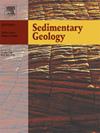Reassessing the late Paleozoic glacial sedimentation in western Paraná Basin, Brazil: A record of a slope and glaciated outer shelf setting in the Aquidauana Formation
Abstract
The near-field glacial record of the late Paleozoic Ice Age in Gondwanan basins is widely used in global paleogeographic and paleoclimatic models. Nevertheless, several late Paleozoic glacial successions still lack a detailed depositional history or reassessment of their genesis under modern glacial sedimentology concepts. One such example is the Aquidauana Formation in the western Paraná Basin, Brazil, which corresponds to about 65 % of the total outcrop area of the late Paleozoic glacial strata (Itararé Group) within the basin. Yet, the stratigraphic architecture and depositional environments are full of uncertainties as the strata are very poorly exposed. This study brings new insights on the depositional history and stratigraphic architecture for the upper half of the Aquidauana Formation by describing a 290-m-thick section cropping out along a recently developed highway in the Mato Grosso do Sul state. A subaqueous slope and glaciated outer shelf depositional setting is interpreted for the upper half of the Aquidauana Formation, which differs considerably from the glacioterrestrial and postglacial arid context traditionally proposed. More specifically, deposition chiefly took place under ice-free conditions on a subaqueous slope within an erosionally-confined channel–levee complex through sediment density flows and subaqueous landslides. Episodic glacial influence on sedimentation is recorded within the uppermost portion of the section by glacially-modified and iceberg-rafted debris as well as a deglacial trace fossil assemblage within proglacial deposits. Sediment transport toward the southeast into the basin indicates a glacial source placed westward of the Paraná Basin, reinforcing the hypothesis of ice-spreading centers located westward of the basin. The outcomes of this study also emphasize the relevance of subaqueous gravity-driven resedimentation in emplacing the late Paleozoic glacial record.

 求助内容:
求助内容: 应助结果提醒方式:
应助结果提醒方式:


